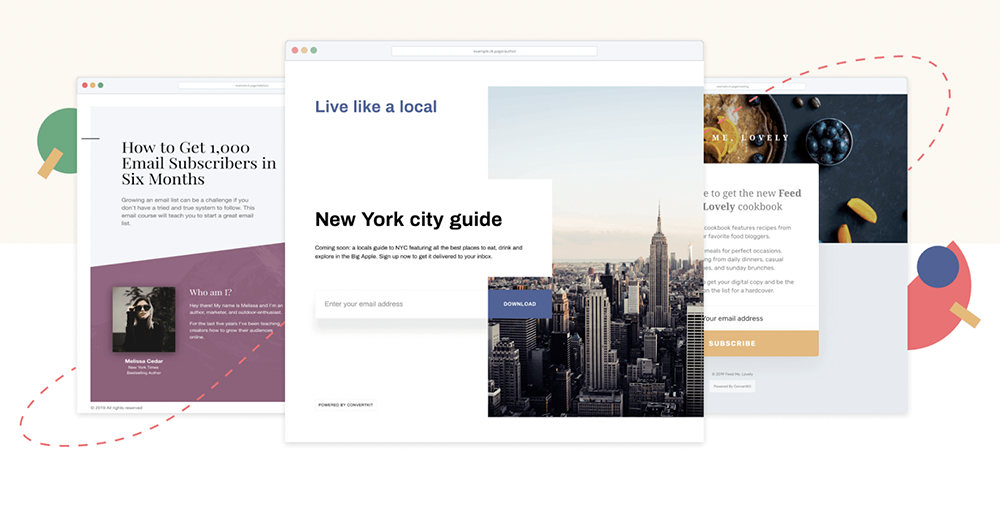How to Use Email Marketing With SMS to Increase Local Business Web Traffic
Yes, email and texting are better together! Combine the benefits of email marketing and SMS for greater engagement with your prospects and customers.

Since the very first email was sent back in 1971, digital communication has been evolving at an exciting pace. It’s estimated that the number of email users will boom to 4.6 billion by 2025—that’s more than half the population of the entire planet.
As a marketing tool, email has been in popular use since the ’90s. Since this time, it’s cemented itself as one of the most effective ways to directly engage consumers. In fact, today, email is understood as the highest-ROI marketing tool, with an average $42 return for every dollar spent.
While email marketing is a trusted staple of digital marketing, new communication channels like SMS have evolved so you can text with your customers. These two channels don’t have to operate separately. You can combine texting and emailing for a powerful way to connect with your customers.
As a local business, If you’re not currently utilizing email marketing and SMS together, then you’ll definitely want to read on to learn all about it.
How can local businesses use email marketing?
Email marketing is a non-intrusive way to stay connected to your audience, and local businesses can use it for a number of reasons, such as:
- Sending newsletters
- Inviting subscribers to events
- Promoting sales and discounts
- Sharing information on products and services
The majority of local business owners understand the importance of boosting their marketing efforts in time for the holiday sales seasons, but there’s much to be gained by being consistent throughout the year.
What are the benefits?
Sending regular emails is an easy and effective way to refresh consumer awareness of your brand. When someone frequently sees your emails arriving in their inbox, they’ll be reminded of who you are, what you do, and why they had an interest in your business in the first place.
As you continue to communicate with your audience via email, you’ll collect valuable insights into how people engage with your marketing, which will help you understand how people interact with your business on the whole. Being able to interpret and respond to the insights you gather is key to improving your marketing strategy, and will enable you to send increasingly personalized messages to different segments of your audience.
How to get started with email marketing
To get started with email marketing, you first need to sign up to a platform, and there are a number of amazing options to choose from, such as Mailchimp, ConvertKit, and Constant Contact. You can then set about building your subscriber base, which we’ll explore in more detail later.
Once you’ve established your initial audience, you can decide on the types of emails you’re going to send and the frequency with which you’ll do so. Creating a schedule is a great way to maintain momentum with your marketing and this is something you should give your attention to at the start of each new month.
Integrating SMS into your email strategy
Although email marketing has the highest ROI, SMS has a much higher open rate. In fact, 98% of SMS marketing messages are opened, compared to an average open rate of less than 25% for email.
This incredibly high open rate makes SMS an excellent way to get your message in front of your potential customers. What’s more, data from Leadferno shows that 78% of consumers want to text with businesses, meaning there’s no reason not to embrace SMS.

The combination of email and SMS is a powerful way to engage your audience in a personal and efficient way. Playing to the strengths of each is arguably the best way to combine the two—emails are the perfect way to communicate long-form messages to your audience, while SMS can be used to share quicker, more concise information or specific calls to action.
For time-sensitive marketing messages, SMS can be a much better way to reach your audience than email. This is because people are more likely to open a text message as soon as they see it, whereas emails don’t often command the same amount of immediate attention.
Ready for 98% of your communication to be seen? 👀 Start your free trail with Leadferno now to start texting with customers.
In order to text, though, you’ll need to build a database of subscriber phone numbers for SMS marketing. It is also important to make sure you’ve gained consent before you send any messages.
Certain email marketing platforms, such as Campaign Monitor, now offer the option to ‘click to text’ within emails. This means that subscribers who open the message on a mobile device can click a link within the message to send a text response. This allows a potential customer to start a conversation with the brand and move fast towards a sale or similar action.
Building a subscriber base online
There are several simple ways to grow your email subscriber list online, such as:
- Website forms/landing pages
- Website chatbots
- Social media signups
- Contacting existing customers
Website forms and landing pages
Your website is the perfect place to capture customer contact information.
Add a pop-up form or dedicated landing page so that visitors can share their details. It’s a great idea to add a ‘phone number’ field when collecting email addresses so that you are also able to reach these customers by text message.
Make sure you also have a ‘first name’ field so that you can personalize your future communications to each person.
Website chatbots
Adding a chatbot to your website allows you to collect visitor information while also adding value to your site. Visitors will enter their contact details to instigate a chat with the bot and they can specify if they are happy to receive marketing communications.
Social media signups
Social media has become an increasingly effective way to gather consumer information in recent years, and there are several great platforms to use.
People are often happy to hand over their contact information on social media. Add an email signup link to your social profiles so your followers can opt to do so.
Contacting existing customers
Your existing customers will likely want to be added to your email list. Since you already have their contact details, you can reach out to them directly for permission.
Building your email list offline
There are also a number of great ways to build your subscriber base offline, such as:
- In-person signups
- SMS messaging
- Exclusive products
- Discounts
- Local business collaborations
In-person signups
Giving your customers the ability to subscribe to your newsletter in person is a good place to start. Install a tablet that all customers can easily use to sign up during their visit and make sure that they know about it.
SMS messaging
SMS is a fantastic tool for building your email list. If you already communicate with your customers via text message or to text them updates, then you can utilize this medium to collect email addresses. Simply send a text and ask your recipients to respond with their email address if they wish to be added to your list or link to your sign-up form.
Exclusive products
If you are launching a new product, then initially offering this exclusively to people who sign up to your email list can quickly boost subscriber numbers. After an appropriate period of time, these products can then be rolled out to everyone.
Discounts
Offering discounts is a simple way to encourage people to join your newsletter.
It’s easy to automate a code or voucher for anyone who signs up, which they can then use in person. You may also enable recipients to use this discount online if you sell products or services via your website.
Local business collaborations
The local businesses that you are partnering with can promote you in their online marketing activities and direct people to sign up for your newsletter in the process.
Teaming up with other local businesses can go a long way to boosting awareness of your brand, as well as bolstering your email list.
Top tips for writing the best email newsletters
If you’re steadily building your subscriber list, then it’s important that you’re strategic with your communications. People can unsubscribe just as easily as they sign up, so be sure to offer value with every email you send. Never write an email that doesn’t have a clear and relevant purpose.
Personalization is key to engaging your audience, so make sure your emails don’t look or sound generic. The most basic way to personalize an email is to always include the recipient’s first name in the subject line or introduction.
As a local business, you will already have a headstart with creating a personal touch because you can demonstrate your involvement in the community. So adopt a friendly and welcoming tone, and be sure to emphasize your local presence.
How automation can save time while boosting web traffic and sales
Automating certain aspects of your email marketing can be great for driving traffic to your website and for growing sales. These emails can be automated according to a schedule or triggered to send when a customer takes a certain action.
For example, an automatic welcome email can be sent to new subscribers. This email can contain a promotional offer to reward the person for joining and direct them to your website for more information.
You can also create a series of automated emails that will be sent to customers after they have been subscribed for set amounts of time. For example, the first email may go out one week after they sign up, followed by another email two weeks later, and so on. These emails could highlight specific products or services, offer discounts, or simply contain engaging and interesting information that’s of some value to the recipient. You could also use these emails to ask for valuable customer feedback.
If you sell products on your business website, then automating emails to customers who do not complete the checkout process is a simple way to boost sales. A customer might abandon their cart at the checkout for many different reasons. This sale can sometimes be saved by simply reaching out to the customer to encourage them to continue. Additionally, offering the customer a small discount can increase the likelihood that they’ll return to complete the purchase.
Automation is not just for emails and your SMS marketing can be organized in a similar way. When automating SMS processes, engagement metrics—such as clicks and conversions—can be monitored in the same way as emails, so it can be helpful to combine the two for maximum insight into your data.
Ready to get started with email marketing and SMS?
Hopefully, the abundant benefits of email marketing boosted by SMS for your local business are now apparent to you.
Remember, ensure you have a solid strategy in place before you start reaching out to your audience, and make good use of all of the analytic information at your fingertips!

Guest Author: Alix Coe
Alix is the Content Marketing Manager at BrightLocal. They focus on sharing insights into the world of local SEO, with a particular interest in reporting on the latest industry news.
Similar posts you may be interested in:

Get our monthly update covering SMS, messaging, and Leadferno features.


